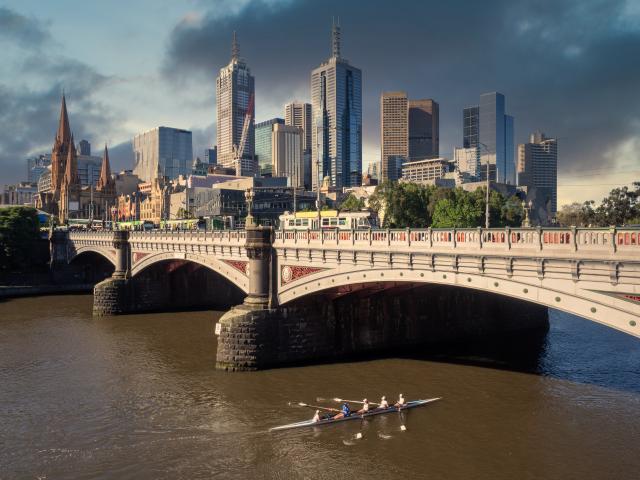Tara Murray
A new report has found that Greater Melbourne is a tale of two cities with many residents not benefiting from all the great things the city has to offer.
The Committee for Melbourne and JLL Australia engaged The Business of Cities to produce the inaugural Benchmarking Melbourne report, which assessed what shapes the city and benchmarked the city’s performance among 20 cities internationally.
The report found that Greater Melbourne was a tale of two cities.
“Whilst the CBD and inner suburbs provide walkable cultural and dining options, easy access to sporting events held at the MCG and Olympic Park, plenty of public transport and reliable internet, a significant number of people do not enjoy these benefits of Melbourne’s liveability,” the report said.
“Rising house prices, particularly in inner and middle Melbourne, and increasingly across Greater Melbourne, are also impacting on the cost of living.”
Greater Melbourne rated well in most committed to climate action, vibrancy and variety of culture, city centre residential, and international diversity and skills profile in the labour forces.
Among the areas that Melbourne could improve in, is house affordability, living in proximity to regular public transport, traffic congestion, mobile broadband speeds and coverage accessibility and health of urban vegetation.
Among the suggestions to help make Greater Melbourne better is a clear integrated transport, land-use and economic development plan for Greater Melbourne in order to catch up and in future lead on innovation, productivity, manufacturing and commercialisation, affordable housing and talent attraction.
The report highlighted the unlocking of precincts in outer suburbs, especially in the west. It said future proofing these locations’ infrastructure, especially through investment in rail freight infrastructure, and access to skills and population will be important for them to succeed and contribute to a cleaner and more efficient Melbourne that reduces excessive travel of trucks and creates more proximity between jobs and homes.
“It is also fundamental to easing congestion, improving movement and providing critical logistics needed for a fully functional city,” the report said.
“At the moment the distributed growth model does not reproduce enough of Melbourne’s experience and liveability advantage, and impedes access to urban opportunity for too many. It also makes it much harder to effect a shift to the higher innovation and sustainability ground where more cities are competing.
“This highlights the importance of supporting efforts underway and in future that ensure Melbourne as a metropolis is connected, physically and digitally, and shrinks the gulf in outcomes between those with and without access to the central city.”
Committee for Melbourne chief executive Martine Ladded said that one of Melbourne’s strengths is also the source of its biggest challenge – servicing a city that is more spread out than most and provides more space to its residents.
“The good news is we are already seeing the investment into major projects by government and industry being realised and this should go a long way to bridge the divide that currently exists between the tale of two cities, being the CBD and Greater Melbourne.”








